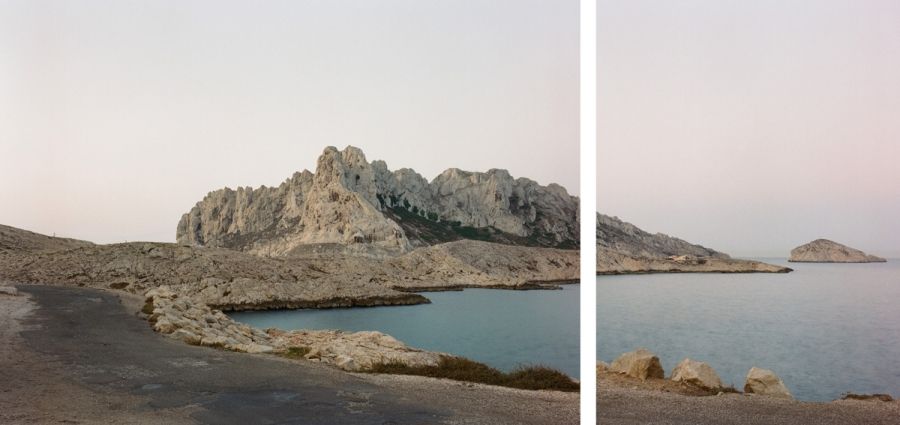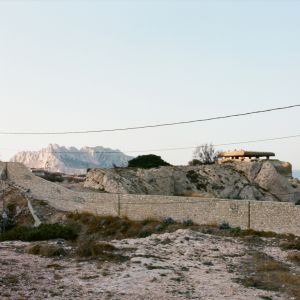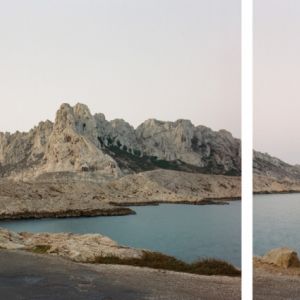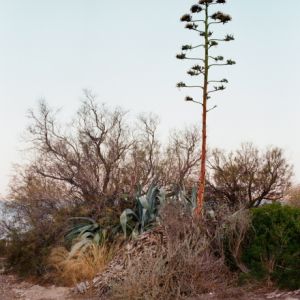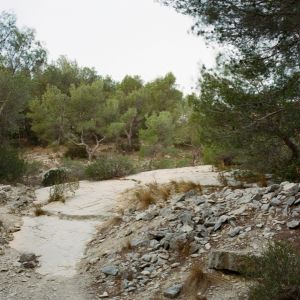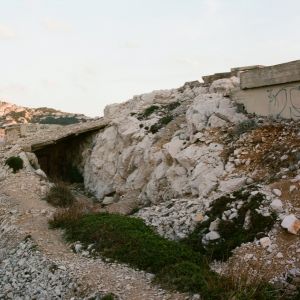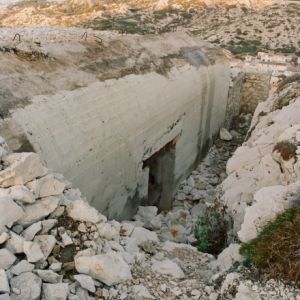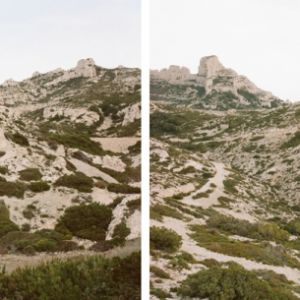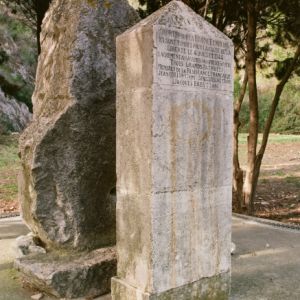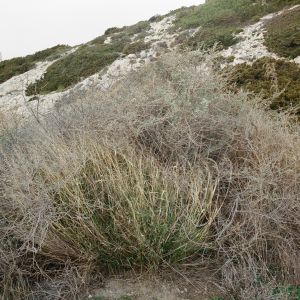Südwall, Marseille, 2017-2020
During the Second World War the southern front (Südwall) was established from the Spanish to the Italian boarder around the coastline of Marseille. It served the German Wehrmacht, who occupied the area from 1943, as a line of defense against the allies. Until today, one can see remnants from military bunkers and forts in Marseille, on the white rocky coast of the Calanques and on the surrounding islands like the Iles du Frioul. In contrast to the bunkers in Brittany and Normandie the history of the southern front (Südwall) is not well known. For my series I am photographing these bunkers and forts which are through their material and their concrete color integrated in the rocky landscape of the coast. If they were not covered with colorful lines, letters and faces of graffiti, one could say they are camouflaged into the landscape, like soldiers who wear camouflage patterns of nature that protect them from being discovered. When Paul Virilio photographed the blockhouses of the North Atlantic coast for his Bunker Archeology project, he was interested in studying the different forms of bunkers and developed a typology of these fortifications. His black and white photographs show us the shape of the bunker from different perspectives like a medical examination where he compares different bodies. “These buildings are no longer just receptacles but binnacles, which is what distinguishes them from ordinary architecture and what gives them this anthropomorphic character. There is here a close relationship between the function of the arm and that of the eye.“ (Virilio, Bunker Archeology, P.43) In contrast to Virilio I´m not interested in a study of anthropomorphic forms, i am interested in the form of the landscape as an environment of bunkers, because through their stony characteristic they become the landscape. In addition to the photographs of the bunkers I made images of the plants and the rocky coast of the Calanques. The coast by itself is a wall, a post of defense that separates the sea from the land. In this way the word Südwall stands not only for the bunkers and fortresses but also for the rocks of the mediterranean coast. At the edge of the streets and former military paths grow agave plants in the dry earth. The word agave is in its origins greek and means sublime or noble. Also the agave is a century plant because it flowers only once in its life and this can take decades. Actually the agave is a migrant plant because it grows originally only in South and NorthAmerica. When I photographed the plant it reminded me of a gun or sword because at the end of its leaves there are thorns for protection. In the harsh landscape the agave resists the wind and sun. The Südwall has changed over the decades from a fortress into a landscape where the traces of the Second World War are visible, in ruins and architectural relicts. The man made wall has turned into a natural structure. Nature and architecture come together and seam to be made of one material. Some bunkers were later transformed into homes where people now live. In one image one can see a stone memorial that reminds us of the victims of war – three resistance fighters that died at a young age. In this picture three persons appear, who are only present through their names: Jean Odelin, 17 years, Serge Loiseau, 19 years and Jaques Baby, 23 years.
The Südwall stands for the complex and conflicted history of Germany and France and the catastrophe of the two World Wars. This former line of defense is a place that reminds us that the Europe of today has suffered from many wars and that its position as a peaceful union of different countries can not be taken for granted, it is a fragile construction.
Text: Margret Hoppe

